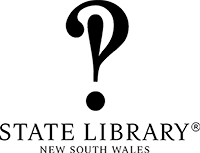FL14369584
Facsimile
Transcription
caused Thomas Hassall to decide to enter the ministry but to become an ordained minister he had to return to England and so left Australia in 1817. Marsden's recommendation and support led him to study at Lampeter in Wales and in 1822 he arrived back in Australia and became Marsden's curate.
It was a close relationship with the Marsden family which culminated in August 1822 with Thomas Hassall's marriage to Anne Marsden, the eldest daughter of his patron. Their son, James Samuel Hassall, was born on 12 October 1823 when his parents were living at Newlands in Parramatta, a two-storey weather board house, built by Marsden for New Zealanders whom he sent to Parramatta to receive an education and religious teaching as well as to learn farming. In 1824 the family went to Port Macquarie where Thomas Hassall was appointed chaplain to the penal settlement there. He did not stay long because he ran into oppostion when he tried to improve convict conditions. An appointment to O'Connell Plains in the Bathrust district in 1826 saw the family living on his property, Lampeter, on which he built a chapel known as Salem. In 1827 Thomas Hassall was appointed to the Cowpastures and commenced work in a parish which he described as "Australia beyond Liverpool", part of the see of the Bishop of Calcutta. He built there Hever Chapel, which still stands, and bought a property, Denbigh, where he spent the rest of his life. He had an extraordinarily large parish which included Cobbitty, Nattai, Burrogorang, Mulgoa, Berrima, Bong Bong, Goulburn and parts of Illawarra. He became known as the "galloping person" and always rode good horses sitting very safely in what he described as his "easy chair".
Thomas Hassall was a popular and diligent parson, in theology he was a strict Evangelical and co-operated with Methodists and Dissenters although it was said that he stood in awe of his father-in-law and never argued with him - in fact, his wife, Anne, a strong woman in her own right, acted as a buffer between them. His religion was practical rather than theological - qualities which his son demonstrated in his ministry in turn.
James Samuel Hassall commenced his schooling at the King's School, Parramatta, named for King William IV, in April 1832, three months after it started, under Reverend Robert Forrest. There his companions included among others, the sons of John Oxley, Gregory Blaxlands and Major Lockyer. Some letters written to and from his parents during his schooldays in 1833 survive. He commented in June that Mr Woolls, the housemaster, had said that "I am improved in my reading, and that I am a very good boy; so I am sure you will not object to send me a cake". His father often wrote to him offering good advice and there were invitations from his parents to his friends to spend holidays with them at Cobbitty. He enjoyed a close relationship with his grandparents and remembered that his grandfather, Samuel Marsden, preaching at St. John's Parramatta. His grandfather preached to a congregation which included the boys from the King's School and James Hassall in his old age remembered hearing his grandfrather preach from the high pulpit which stood in the middle of the church about "the patriarchs and saying that Abraham was a squatter on Government ground". James Hassall visited the Marsden home frequently while he was at the King's School and his grandmother and aunts supplied him with
Notes and Questions
Nobody has written a note for this page yet
Please sign in to write a note for this page


